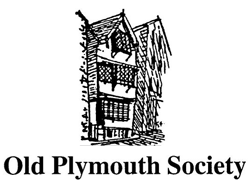by Jan Horrell
Published August 2012
Local newspaper archives, in particular the “Western Morning News”, have proved to be both enlightening and entertaining on the subject of exhibitions held in Plymouth in the late nineteenth and early twentieth centuries. Initial research was inspired by dates on postcards, which served to pinpoint the events. Other extravaganzas have been mentioned in published material and unpublished archives, in this case a school log book.
The Drill Hall, which had its entrance in Walker Terrace, between Prospect Place and West Hoe Road, played host to a variety of occasions. At a record 260 feet long by 80 feet wide, the Drill Hall was one of the largest spaces in Plymouth at the time, being used as a skating rink for a short period between 1874 and 1875 (Lauver, 2004). In his “Plymouth Theatres and Cinemas” published in 1983, P F Ghillyer lists exhibitions and celebrity concerts among the uses of the timber built drill hall, as well as the basic drill and training of the Territorial Army.
Public and trades exhibitions have been re-corded, and the city hosted national as well as local events in a number of venues. A Cluer (1974) noted with some pictorial evidence the Agricultural Society’s Exhibition of 1898, the exhibition of animated photographs at the Mechanic’s Institute in 1900 and the Scientific Exhibition in St. Andrew’s Hall around 1876. Unfortunately there appears to be a lack of corroborating newspaper evidence for the arrival of wild animals in the shape of Bostock’s Circus that A Cluer (1974) pictures parading through Mutley Plain in June 1895. All the advertisements suggest that the circus was located at a site in Alexandra Road having spent the previous few days performing at the Ferry Ground, New Passage in Devonport (Western Morning News, 29/6/1895, 4).
Exhibits from the navy, types of machinery and recent innovations were recorded in detail by the Western Daily Mercury on 25th and 26th June 1887, under the umbrella of the Trades and Friendly Societies Exhibition. A large, if slightly chaotic, procession left Raglan Barracks “headed by the band of the Artillery Volunteers and the Grand Marshall, who was mounted and had a drawn sword” to parade from Devonport through Stonehouse and Plymouth before arriving at the Drill Hall (Western Daily Mercury, 26/6/1887). Banners and decorated carts and carriages created a carnival-like atmosphere for the crowds that followed the parade’s progress. The correspondent describes the “vehicle containing a group of hand bell ringers” as being a relief amidst the jamboree a personal comment.
Postcards provide a sense of the variety, if not the size, of the Plymouth, Devonport and Stonehouse Trade’s Exhibition held between 4th and 18th November 1903 at the Drill Hall. “Fairyland”, as the Western Morning News described it warranted a special “Exhibition News” addition to the daily newspaper that described the vast array of activities and the changing performance programme. The official guide ran to eighty pages. Again the band of the 2nd Devon Royal Garrison Artillery Volunteers was much in evidence, but the occasion was far from serious with “Dr. J.C. Oliver, world famous humorist and illusionist, and the “Hall of Laughter” promising “roars of laughter”. Advertisements extolled the virtues of the “light running typewriter” and “Phosferine, the greatest of all tonics. The Western Morning News stand printed the “Exhibition News” for all to see and described the process as “machinery in motion driven by electricity”. With the wonders displayed at the exhibition for the ordinary people of Plymouth, it is no surprise that it was seen as fairyland.
Four hundred years after the “Mayflower’s departure a concert was one of the events arranged to celebrate the anniversary. A choir of school children and adults performed a cantata, “The Ship o Adventure” written by Rev. Carey Bonner, on 4th September 1920 to a large audience in the Drill Hall. Lady Astor was one of the distinguished guests at the American Night (Western Morning News, 9/9/1920, 7), held as part of the Mayflower Pageant that was visited by school children fro” across the city (Compton School Log Book 9/9/1920).
Schools were also provided with demonstrations from the Foreign Missionary Exhibition hosted by the Drill Hall between 29th January and 1st February 1907 (Western Morning News, 29/1/1907). Advertising had the strap-line “nothing like it ever seen in the west”. School children were invited to the predominantly Methodist Chapels in the three towns to hear the experiences of missionaries.
There are obviously many more events from this period, as well as before and after, that serve to provide a window on the experiences, innovations, oddities and activities that were celebrated in Plymouth. May there be many more postcards, as a source of date references, to be found that can provide direct links to the records of the past.
References:
“Plymouth and Plymothians: photographs and memories” (1974) A Cluer. “Plymouth Theatres and Cinemas” (1983) P.F. Ghillyer & W.J. Power. Plymouth Postcard Collectors Club newsletter. (2004) D. Lawer.
